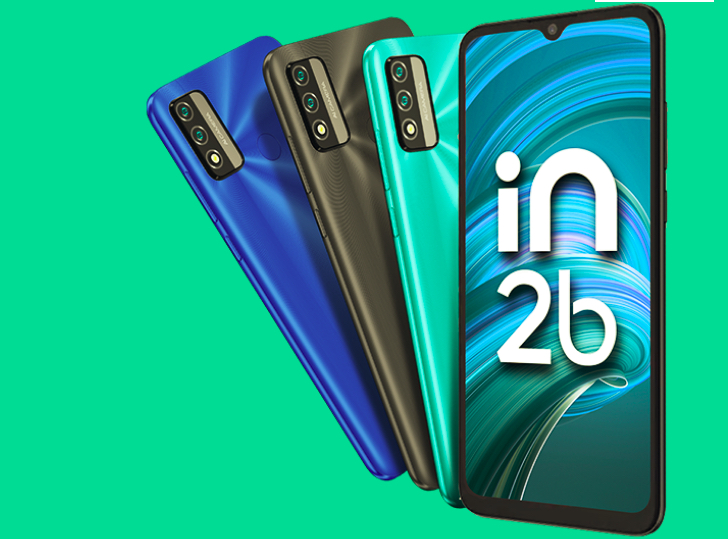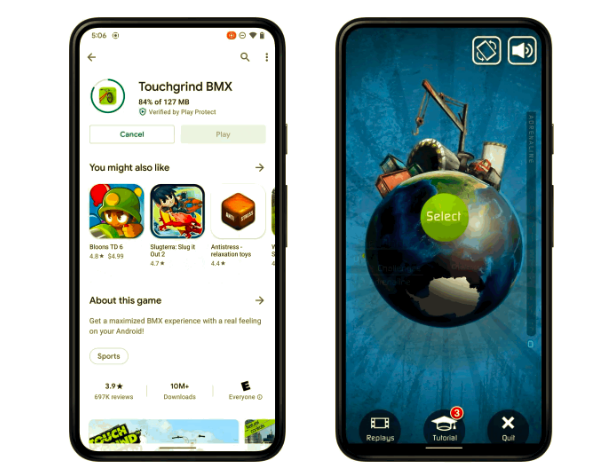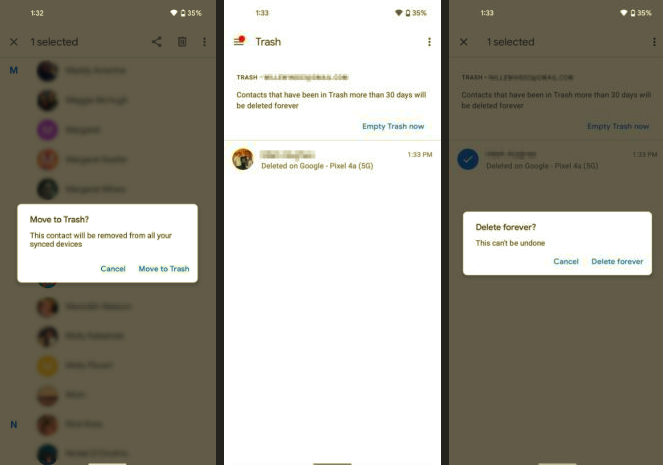
There’s no doubting that Google likes to shake things up in the smartphone world. The arrival of the Nexus 4 in late 2012 shocked everyone in the industry, with near flagship specs and yet released, direct to consumers, at close to ‘cost’ price. Where were the margins, the profits? It was a win for Google in gathering geek and enthusiast mindshare though, and the Nexus 5 looks set to repeat this success now, in late 2013… In fact, it’s such a superior device to the Nexus 4 that its impact will be felt far and wide. And if you can’t spare the 15 minutes it’ll take you to read this review then I’ll summarise: it’s an excellent device at an astonishing price (£339 including sales taxes, SIM free for the 32Gb version in the UK) – run, don’t walk, to buy one now from the Google Play Store.
Android should mean Android. It’s something I’ve said for so long that I must sound like a broken record – but as a mobile OS, Android should be a consistent interface and experience, and it’s not. Around 98% of Android smartphones in existence have manufacturer ‘skins’ in place of the ‘stock’ Android interface and, despite some nice innovations here and there (e.g. TouchWiz homescreen carousels and hiding unwanted apps, HTC Blinkfeed), most people are experiencing something that’s slightly degraded in terms of speed and resources. They aren’t really using Android as Google intends.
‘Stock’ Android, as here in the brand new version 4.4 on the Nexus 5, is simpler, faster, more efficient, more easily updated and more malleable than the skinned versions seen on the likes of HTC, Motorola, Huawei and LG handsets. In fact, the latter, LG, is the manufacturer of the Nexus 5, with Google using the company as its OEM, perhaps spurred on by LG’s achievement in releasing the well respected G2 recently.


Almost all screen, the perfectly formed Google Nexus 5
You can think of the Nexus 5 as being a variant of the G2 with stock Android, but this isn’t telling the whole story, since both the hardware and software are very notably different, as we’ll see.
Shown on this page is the 32GB ‘white’ version, with the adjective in apostrophes because it only refers to the back of the phone – the sides and front are all black still! It’s a curious design decision, though not an unattractive one – needless to say, the ‘black’ one is all black!


The rear of the ‘white’ Nexus 5 – the front is still black!
The Nexus 5 is the culmination of two years of progress by Google, shown off in its line of what are effectively technology demonstrators. The Galaxy Nexus was a standout at the end of 2011 with Ice Cream Sandwich, while the Nexus 4 was something of a ‘meh’ device (a lower contrast LCD panel, tinny speaker and disappointing camera), not helped by its OS version also reaching the Galaxy Nexus, which many enthusiasts preferred for its vibrant AMOLED screen and replaceable battery. The ‘5’ here introduces a whole new generation of the OS, partly in terms of UI tweaks but mainly because of what’s under Android’s hood – and, significantly, its OS update won’t come to the venerable Galaxy Nexus – at least not officially – effectively forcing owners of this device into making the leap to this latest Nexus.
Beautifully made
The Nexus 5 is beautifully made – it’s polycarbonate (so, yes, plastic), but very solidly constructed and with no creaks from the back cover – unlike the disappointingly built G2. The display is up with the G2’s (albeit 0.25″ smaller across its diagonal) and is one of the best LCD screens I’ve ever used. It’s 1080p, full RGB and is stunningly crisp, almost 450ppi and market leading. Watching video content and viewing photos, the colours and contrast don’t seem that far short of AMOLED performance, yet without having to resort to the latter’s pentile matrices or excessive power use when showing white content (e.g. web pages, Twitter, emails).


Showing a web page at 450ppi – quite stunning…
In use, the Nexus 5 display is clear enough and bright enough that, for a change, the device can be left in Android’s ‘auto’ brightness setting, the single option that can make a huge difference to daily battery life. When switching from Chrome to Gallery to Twitter to Netflix to games in day to day use, not once did I even notice that the ‘auto’ setting was still on – a tribute to LG’s latest LCD panels.
Also welcome is the outdoors visibility, with the Nexus 5 screen being quite visible in sunlight – there’s the inevitable washing out of colours, but you can read text content on the screen, which is more than could be said for the display on many other contemporary smartphones (e.g. here).


With the Nokia 808, the previous sunlight visibility champion, here snapped in a sunny room indoors….
Up top there’s the inevitable 3.5mm audio jack, though note that the behaviour of Android’s headphone (AHJ) driver has changed – plug in a ‘three button’ headset and the top and bottom buttons now control volume rather than switching tracks or skipping podcast ad breaks. This behaviour is perhaps more standard (for example, it’s how Windows Phone 8 behaves), and you can still skip forwards (tracks/ad breaks) by double clicking the main play/pause button, but the difference here may catch some hard core Android users out.
Not that Google even ships a headset in the box with the Nexus 5. It’s perhaps understandable at this price point and missing out the headset does follow the modern ecological trend. And yes, every single potential buyer will almost certainly already own at least one compatible accessory (for the record, I swear by the Nokia Monster in-ears here, which sound superb with the Nexus 5).
The side buttons are listed as ‘ceramic’, which effectively means ‘not cheap plastic’. Down at the bottom of the device are twin speaker grilles – but, as on the G2, one of them (the right one, in this case) is a dummy. The speaker itself isn’t bad and is probably the same component as in the G2, though is on the quiet side if you plan to listen to it in a noisy environment.


Twin speaker grilles are just for show, only one has a speaker component behind!
Imaging
In fact, a lot of what applied to the LG G2 can be applied here, the camera has the same OIS (Optical Image Stabilisation), meaning super smooth 1080p video capture and much sharper low light shots of static subjects, with a crisp example shown below.


Low light shots come out super-crisp, thanks to the OIS…
The flash, as on the G2, is only LED, of course. We’re still waiting for ‘flat capacitor’ Xenon flashes to make it into the Android world, so in the meantime, don’t try snapping kids indoors or indeed any moving subject in poor lighting.


For such a (relatively) small sensor, the Nexus 5 camera is top notch….


Another example in sunlight, great colours and detail


Indoor snaps come out well too, thanks again to the OIS. For static subjects, anyway!
Although the Google ‘stock’ Camera application is pretty basic, there is one addition worth talking about – a ‘HDR+’ mode, which grabs three bracketed images very, very fast – effectively instantaneously, using hardware acceleration, as on the iPhone 4 and 5, and then combines them for a photo with higher dynamic range. Here’s a HDR+ example:


In this garden scene set against a very bright sunny sky, detail is picked out in (what is to the naked eye) deep shadow, thanks to the HDR function built-in.
The camera glass on the Nexus 5’s back is protected by a slightly raised circular plastic ridge, a system that works well without getting in the way. Happily, the LG G2’s experimental rear button cluster is gone, in favour of more traditional side placings, and I for one am very happy about this. The white rear here isn’t Samsung-style gloss plastic, but a rather lovely matt effect, deliberately slightly off-white out of the box so that day to day use doesn’t dull the finish too much.


The camera glass is actually flush, but this circular ridge protects it from scratches and other surface contact.
Under the hood
The 2300mAh Lithium-Polymer battery is sealed here, as is the modern way, but I’m going to forgive it because there’s full Qi wireless charging – meaning that keeping the Nexus 5 topped up is as simple as keeping it on (in my case) a Nokia Qi charging pad whenever I’m at my desk. The Nexus 4’s behaviour on generic charging pads wasn’t always consistent, but the Nexus 5 seems much more compatible so far.


On charge on top of a Qi wireless charging pad – note the clock ‘Daydream’ system built into Android…
Battery life is tough to judge because the Nexus 5 is so new, but with backlight brightness very usable in ‘auto’ configuration and with judicious connectivity decisions (LTE, 3.5G in your area, etc.) there’s no reason why the ‘5’ shouldn’t deliver a full day of serious use.
Storage is sealed too, at 32GB on this variant, of which about 27GB are free out of the box – that’s enough for me, the lack of microSD isn’t, for once, a complete showstopper. But don’t go for the 16GB version unless you’re prepared to stream most of your media.
Under the hood, there’s a blazingly fast Snapdragon 800 processor running at a stonking 2.3GHz – the UI on the Nexus 5 flies and there is no sign of any slowdown whatsoever, even as you dive into Gallery or splay into the heaviest web page. The only delays you’ll see here are when constrained by cellular or Wi-fi bandwidth, so it’s good that Wi-fi runs up to ‘n’ and ‘ac’ standards and LTE ranges across up to seven bands. Match fast connectivity to the Nexus 5 and you’ve got a staggering computing resource in this diminutive frame.
KitKat
Employed here, of course, is the very latest version of stock Android – 4.4, KitKat. The launcher has been tweaked to bring Google Now further into the user’s eyeline, with just a swipe from the left duplicating the existing swipe up from anywhere. There’s also as many homescreens as you want, they get added as you try and drop content off to the right (of the err…. existing rightmost screen!), though there’s sadly no wrapping, Samsung-style – it’s strictly a left-right homescreen panorama.
The lockscreen has been subtly tweaked so that its functions are more obvious. In addition to swiping from the central padlock in any direction to unlock the screen, there are now big visual clues for swiping up from the bottom (Google Now) and from the right (for Camera). New is that, when playing music or a podcast, the appropriate artwork is scaled up and used as the lockscreen background – a very neat touch which can be surprisingly effective.


Lockscreen hints and homescreen content addition – all more intuitive than before…
Thankfully, the backwards logic for adding widgets to homescreens from Android 4.1 to 4.3 (pick a widget and then find somewhere to put it) has now been reverted to what every other ‘skin’ maker does anyway – to add content to a homescreen spot, just tap and hold – much better, Google.
Transparency effects and graphical tweaks abound, with the virtual controls on the homescreen and in the applications drawer floating on top of whatever fancy background wallpaper you have selected.


Fully transparent virtual Android controls, here shown over the Google Now homescreen pane…
The SMS Messaging application is now gone, replaced rather unintuitively by the ever-growing Hangouts, which now includes full SMS and MMS support. The advantage for the user is perhaps less applications to worry about and I did like the way existing contacts and Google+ conversations can now be daisy-chained in with text messaging.


Hangouts, building in SMS and MMS these days, plus Quickoffice, a full cloud-integrated Office editing (and printing) solution….
Included now as standard is the full Quickoffice editing suite (you’ll remember that Google bought the company a year or two back?), plus extra cloud drive integration and extensive printing support to any network or Internet HP-compatible or Google Cloud Print device. And Bluetooth support has been improved yet again, with far better compatibility (apparently) with car kits and speakers – not that I had any issues with Bluetooth under Android 4.3.
Speaking of which, under Android 4.3, the OS took over 600MB of RAM, causing 1GB devices to be compromised for power users, with applications closing when you wanted them to stay open, perhaps just because you wanted to play a game. Google claims this RAM usage figure has been reduced to just 300MB, i.e. half the RAM footprint, though in my tests on the Nexus 5 it was more like 450MB – still, this should significantly improve multitasking on some devices. The Nexus 5 here has 2GB of RAM, so you start off with a huge 1.5GB free after booting – luxury!


Nexus means never having to put up with skins, bloat or tampering….
Verdict
It all adds up to a major update to Android – if you were underwhelmed by 4.3 – and hey, even Google didn’t even bother to update the name from ‘Jelly Bean’ as it stepped from v4.1 to v4.2 to v4.3 – or by the Nexus 4’s hardware, rest assured that the combination of v4.4 Kitkat and the Nexus 5 is at last a big enough step forwards that we can leave behind the venerable Galaxy Nexus. Which is just as well, because it seems that the latter’s TI chipset means that 4.4 Kitkat won’t run – officially – on it. Though I bet hackers find a way to recompile 4.4 and get it running on the older device. Watch Android Beat for such news, of course.
So much is familiar here that I appreciate that it’s hard to get too excited – we’re still talking evolution rather than revolution. In addition, a large amount of what Google has created here (and over the last six months) is also available via Google Play Services and all the updated Chocolate Factory applications, on lesser Android devices from many other manufacturers.
However, the Nexus 5 does bring Google’s flagship line right up to date and in some style. Essentially, for Nexus 4 and (especially) Galaxy Nexus owners, it has reset the clock, so that we can now look forward to another couple of years of surfing the crest of Android evolution, away from manufacturer skins, bloatware and tampering.
And, in the process, Google has produced a smartphone that’s almost flawless and fully capable of being used day to day in almost every capacity without feeling like a compromise has been made.


The Google Nexus 5 – stunning computing power in something sleek and svelte, at an unimaginably cheap price.
All of which is a very positive report for this new smartphone. But the kicker, the real kicker, is the outrageous asking price. Outrageously cheap, that is. Google has done a deal with LG and I suspect is selling the Nexus 5 at close to ‘cost’ price through its Play Store in many markets. This is great for us consumers, both for picking up the Nexus 5 and, ultimately, for helping stop smartphone pricing from rising across the board to the same stratospheric levels as those in the Apple iPhone world.
Highly recommended.



















